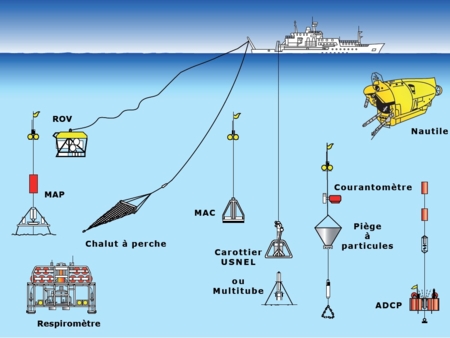Genomic maintenance in hyperthermophilic Archaea Pyrococcus abyssi : discovery of novel physical interactions and functional carcaterisation
Archaea are micro-organisms present in all ecosystems, but are majoritary present in extremophilic environments. Hyperthermophilic Archaea, as Pyrococcus abyssi, are permanently exposed at temperature which can increase the rate of spontaneous DNA damage. It is probable that hyperthermophilic Archaea possess efficient molecular mechanism to duplicate, maintain and stabilize their genomes. The aim of this project was to investigate the interaction network involved in the process of DNA replication and DNA repair. The methodological approach consists in the coupling of pull-down with mass spectrometry identification of interacting partners. A preliminary interaction network was identified that was composed of new proteins as well as unsuspected interactions between known components of DNA replication machinery. The main results consist in: (1) the nuclease Pab2263, which interacts with PCNA, is a novel player in DNA metabolism. (2) PCNA is likely part of a macrocomplex with the ubiquitary proteins Mre11 and Rad5O suggesting a role of this complex in the repair of double strand break in connection with a replication fork. (3) Fenl and DNA primase interact physically and can collaborate in vitro to resolve intermediate step of the base excision repair pathway. These results enhance our understanding of DNA repair process in Archaea.







